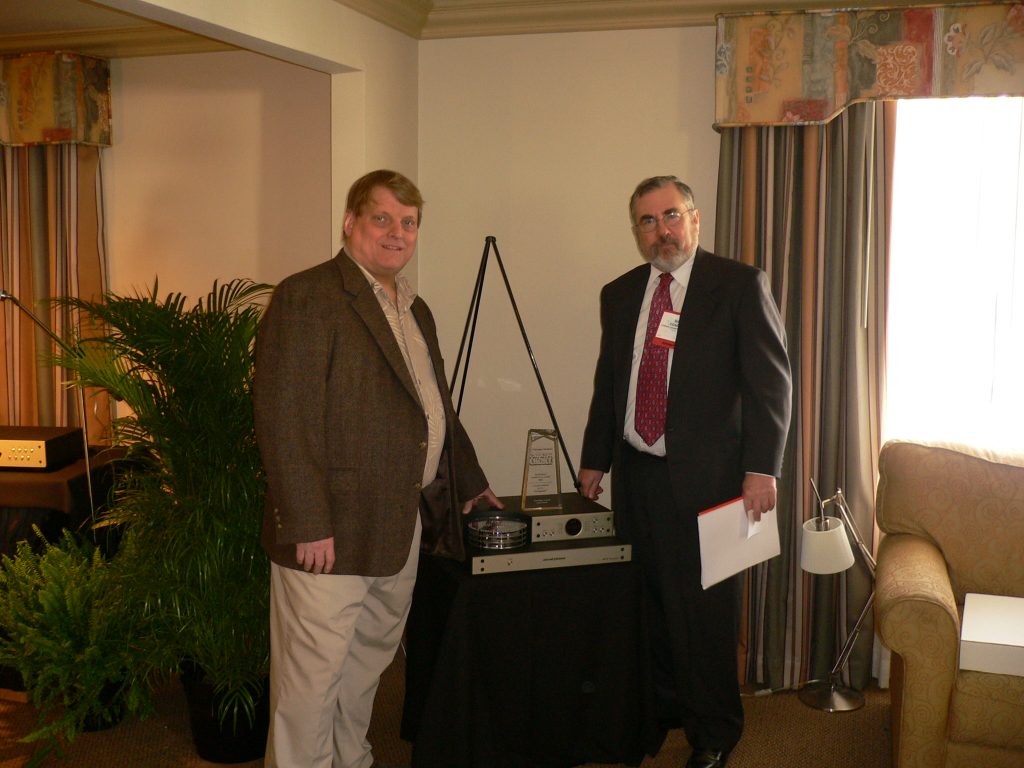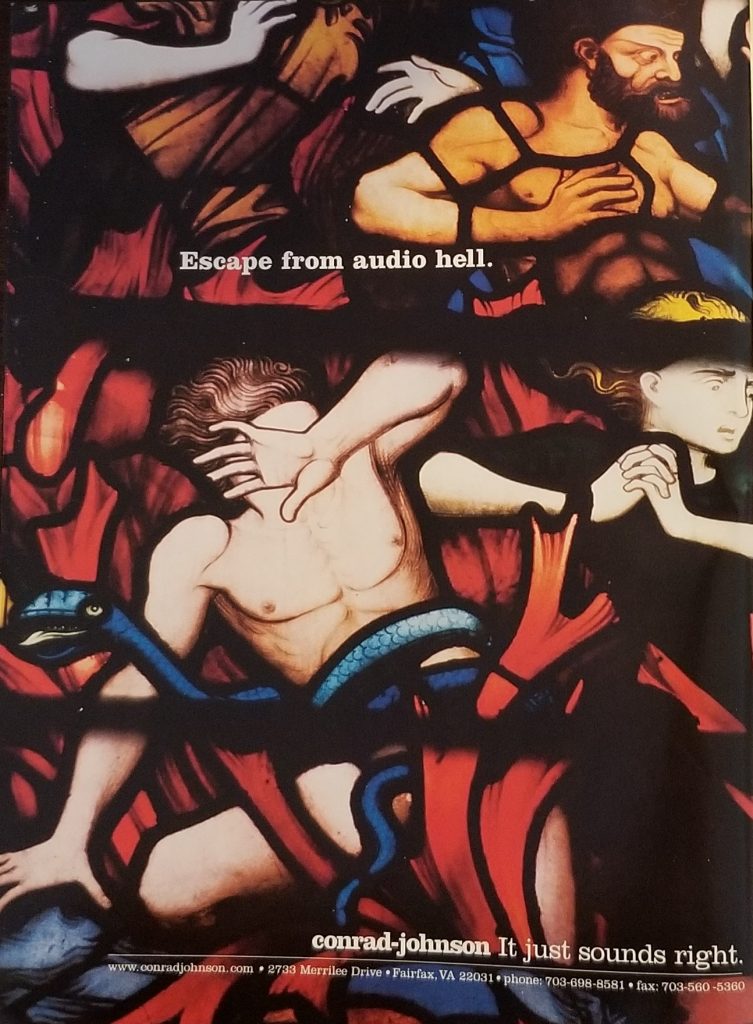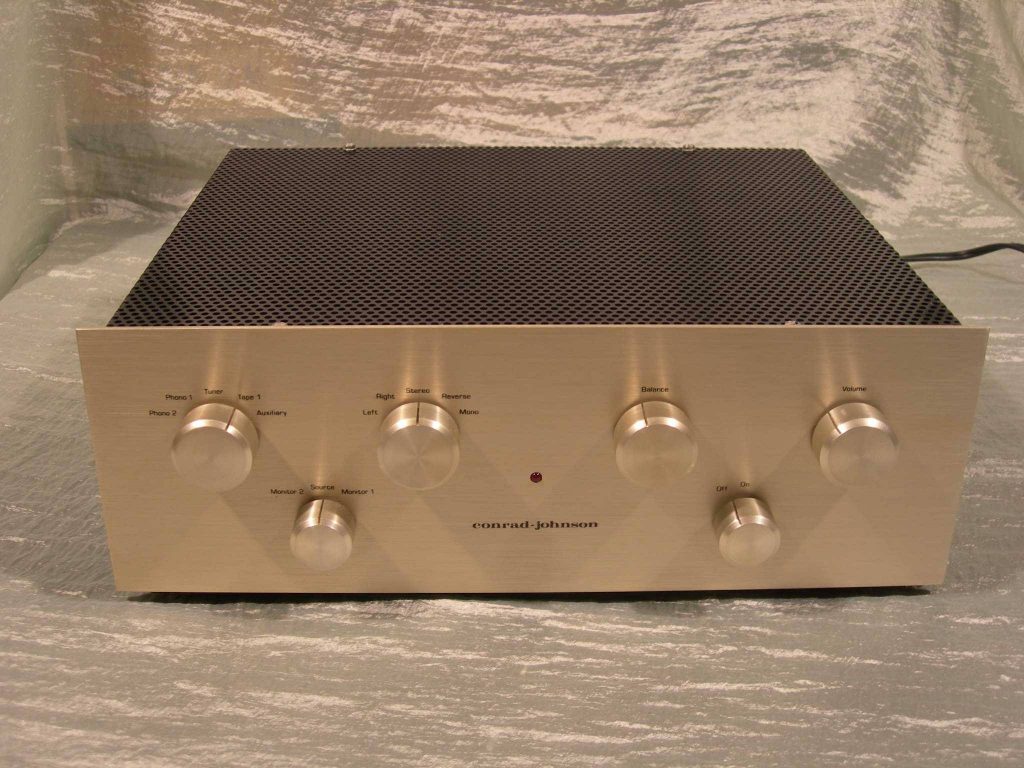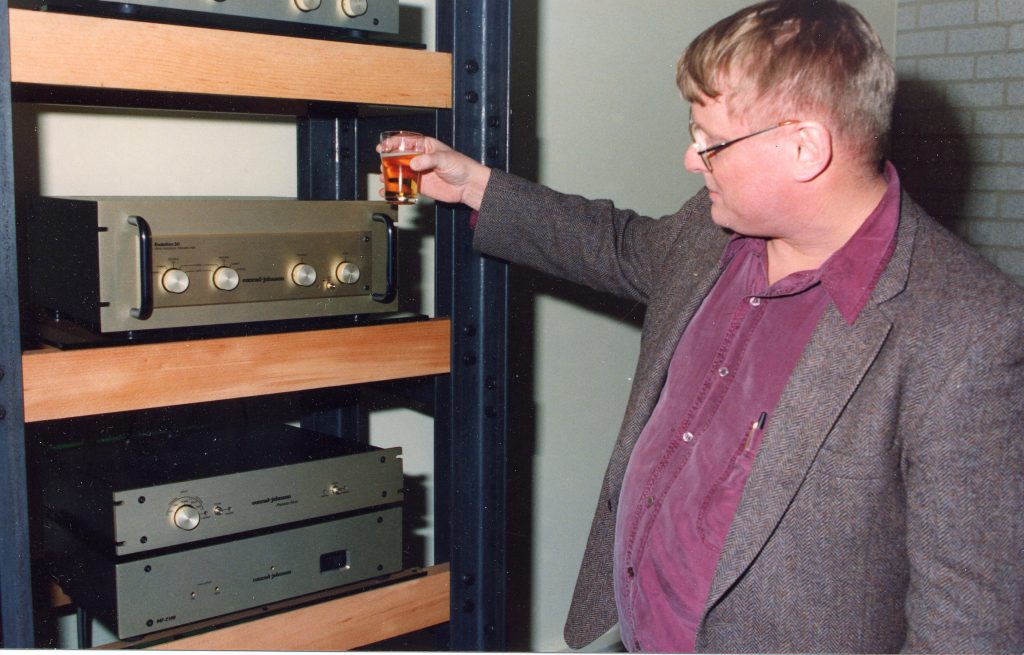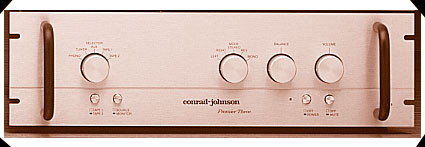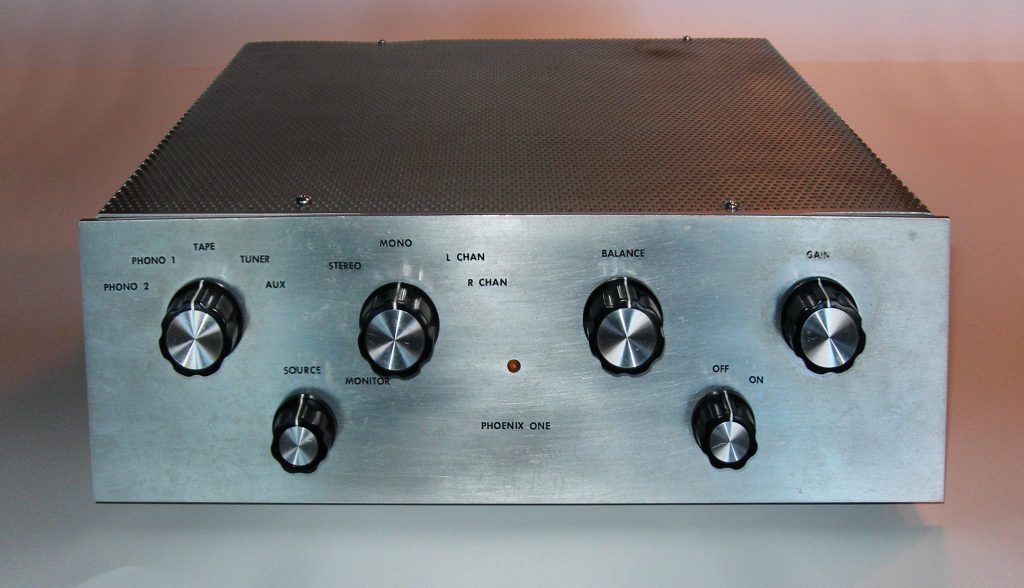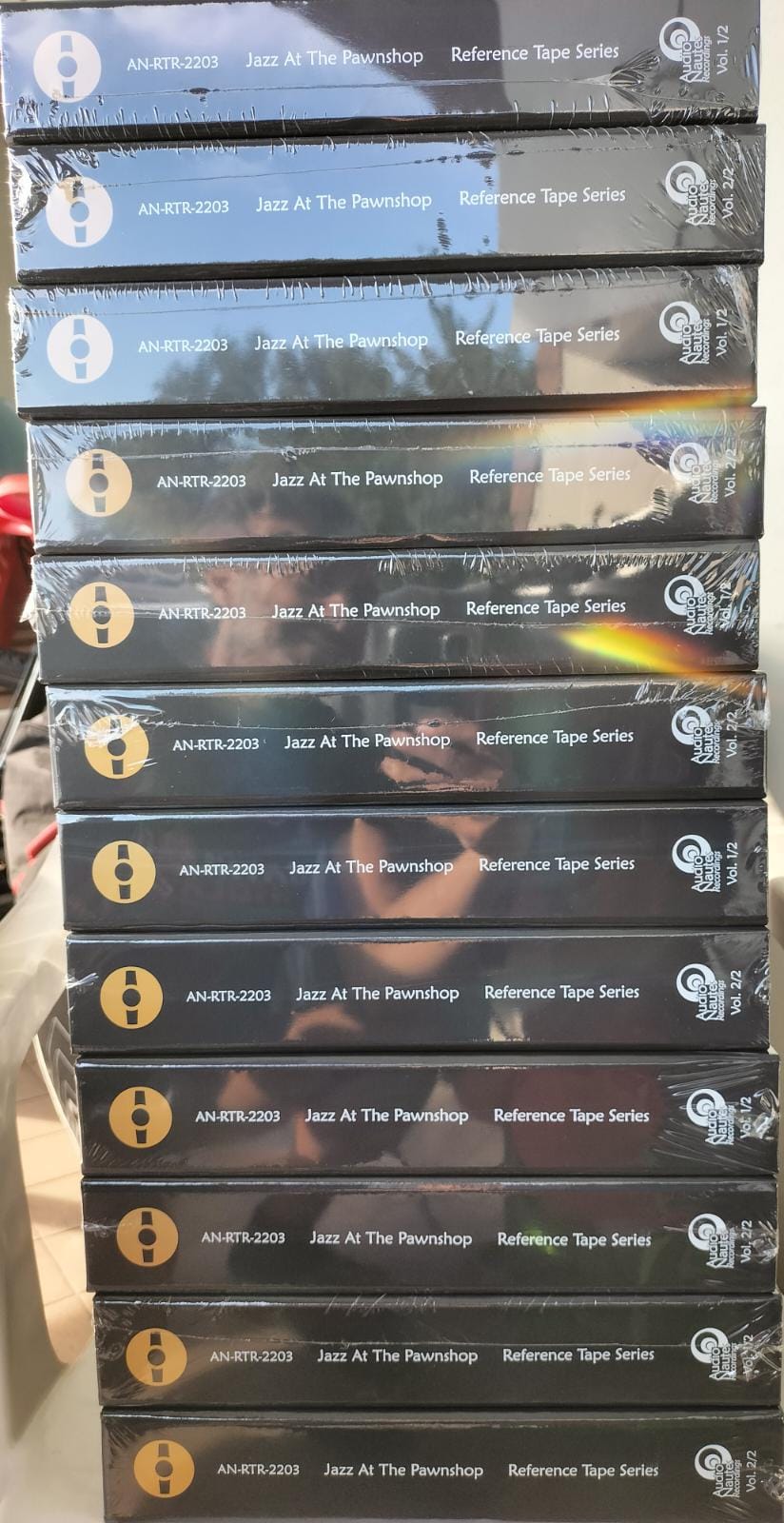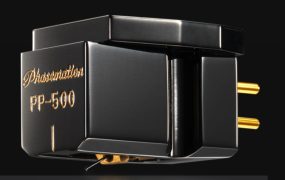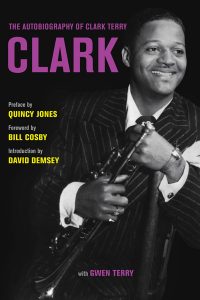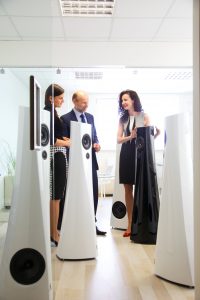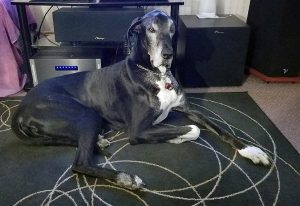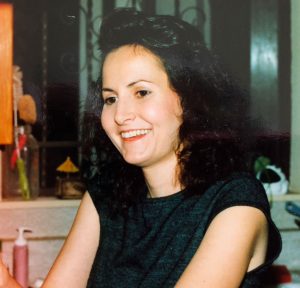Lew Johnson (left) and Bill Conrad (right) with the ACT2 preamplifer at a CES many years ago!
This is the story of Bill Conrad and Lew Johnson of conrad-johnson. The always introspective Bill and the ever-affable Lew. Two audiophiles who in their personal quest for audio nirvana came together and successfully parlayed their unbridled passion about high-end audio equipment and music into a highly successful business. A company that celebrated its 40th anniversary this year and joined that exclusive list (for millennials, that's like having 5000 Facebook friends!) of American high-end audio companies such as Spectral, Audio Research, VPI, Magnepan, Grado, Wilson Audio, Krell, McIntosh, and PS Audio achieving this feat. Making this accomplishment even more impressive is that Bill and Lew made a name for themselves with a technology—vacuum tube electronics—that was pronounced DOA over a decade earlier. conrad-johnson—along with Audio Research—kept vacuum tube technology alive and glowing for 40 years now.
By my count, conrad-johnson produced 94 vintage products (in addition to nine current models). Those products including a variety of solid-state and tube amplifiers, preamplifiers, phonostages, pre-preamplifiers and digital gear in addition to forays into Synthesis speakers, Sonographe electronics and turntables and McCormack Audio. conrad-johnson even distributed the Argent moving coil cartridge back in the late 1970s. Bill and Lew's fame spread far and wide and Charles Rodrigues honored the duo with a cartoon (the original cartoon cell hangs in their offices and also appears in Rodrigues' long out-of-print cartoon collection Total Harmonic Distortion) that appeared in the pages of Stereo Review magazine. Speaking of humor, who can forget the clever conrad-johnson's advertisements that appeared in the pages of many high-end audio magazines including the "Finger of God/Premier 8 or "Escape from Audio Hell"?
The story of Bill Conrad and Lew Johnson is well documented in the annals of high-end audio magazines. Both men earned PhDs in economics, Bill from MIT and Lew from the University of Washington, and fate brought the two budding audiophiles together at the Federal Reserve in DC. Like any two audiophiles, the testosterone levels quickly peaked and talk soon turned to who had the better audio equipment and could they build something better than what they owned?
Bill and Lew's epic journey began with The Conrad-Johnson Preamp (later known as the PV-1) that was first reviewed in the pages of the then fledgling The Absolute Sound magazine (kicking off in Issue 11 with discussion continuing on in Issues 12, 13 and 15). PHD's (Patrick Donleycott) review began with the prescient opening, "Maybe tube designs are like wine. It seems that the older the tube technology gets, the better it sounds (The Absolute Sound, vol. 3, no. 11, pg. 334-336, 1978). PHD and HP (Harry Pearson) largely agreed on the merits Bill and Lew's new preamplifier. HP was so impressed that The Conrad-Johnson Preamp earned a Class I recommended product rating (just below his reference Van Alstine/Audio Research SP-3a-2). RJS (Richard J. Sabella) and JN (John Nork) later added their comments in TAS Issue 12 and 13, respectively. Along came The Conrad-Johnson Preamp Revised with a new volume control and rerouted wiring and as HP commented (TAS Issue 15), "It appears as if, for once, all of us are in agreement on the virtues of a unit…the sort of sonic overhaul that would have prompted many another manufacturer to add an 'a' or a 'mk II' to the unit's title." All of that back then for $585 in 1978!
Jump ahead to 1997. Bill and Lew celebrated the company's 20th birthday with yet again another statement product: the new dual mono ART (Anniversary Reference Triode) preamplifier. The ART preamplifier was the very first conrad-johnson product bearing that name (the only other products earning an ART designation are the original ART monoblock amplifiers and now the new ART300 monoblocks [reviewed here] and the stereo ART150 amplifiers). The ART preamplifier's audio circuit was as simple as it can get. A zero feedback, single gain stage consisting of one composite triode consisting of ten paralleled sections of high-transconductance miniature dual triodes. The multiple parallel tubes reduced both the ART's output impedance (allowing it to drive longer cables) and had a significant noise cancelling effect. The ART—Ultimate Audio magazine's product of the year—served as my reference preamplifier for the better part of twelve years before the advent of the GAT. Something virtually unheard of in the industry and speaks to the soundness of the ART preamplifier's basic circuit design. As my former colleague Tom Miiller observed in Audio Adventure (Volume 3, Issue 5, 1996), "the ART preamplifier flies over the tonal balance hurdle, aces the harmonic balance test and dives into the pool of timbre resolution." Tom concluded his enthusiastic review with, "Two guys, twenty years. What's next?" Yes what is next?
Fast forward another twenty years and Bill, Lew and now Jeff Fischel marked the company's recent 40th Anniversary in the high-end audio business with the release of the massive 300 watt per channel ART300 monoblock vacuum tube amplifiers. The 40th Anniversary ART 300s are connie-j's (as HP fondly referred to the company) first vacuum tube amplifier utilizing the relatively new KT150 output tubes as well as their first amplifier using other than EL34s or 6550s/KT120s. Replete with a totally new industrial design by Lew.
Here's a little peek into history of conrad-johnson with company founders Bill Conrad and Lew Johnson.
First up is Lew Johnson who is now over 70 years old and sitting back enjoying his lake house and three kids and two grandkids!
Lew with the Evolution 20 preamplifier at CES many years ago!
MBA: Let's go back to that fateful moment forty years or more ago when you took the leap of faith and started conrad-johnson.
LJ: We didn't leave our jobs at first and had a safety net. And thank goodness for that! There was a mini-recession in 1981 and we were lucky to have other jobs. We didn't have any actual industry experience and had to learn the business from the ground up. We learned quickly because we had to. We were originally going to sell direct but that lasted for only 9 months. We also learned about dealing with dealers and distributors.
Bill and I started with intention of going into business. Audiophile drag racing. Is my system better than yours? We had a couple of different preamplifiers and were curious why these systems sounded different. Could we combine their virtues? Bill and I spent over a year developing the circuit [for The Conrad-Johnson Preamp]. Eighteen months later it was a product. The Conrad-johnson Preamp later became the PV-1.
MBA: What was the circuit inside the first preamplifier?
LJ: We studied other circuits including the Marantz 7, the standard at the time and the greatest influence. Another was the Dynaco circuit and a few others of the time. Over time, there have been great advances in materials. A Marantz 7 built today with the best available materials would sound WAY better than the original Marantz 7.
MBA: What was it like meeting first Harry Pearson of The Absolute Sound who really put you guys on the map.
LJ: Without HP there wouldn't have been a high-end industry. He coined the language and kickstarted the whole thing. He, along with JGH, were the fathers of the industry.
We were after all audiophiles deep down and felt the way to market our new product was through reviews and reviewers. We sent an "aggressive" letter out to several magazines that we made the finest preamplifier. Remember, there were very few companies doing vacuum tubes then save for Audio Research.
MBA: Were you prepared for orders after The Absolute Sounds' review of The Conrad-Johnson Preamp?
LJ: We didn't have any dealers at first and the reviews got dealers to talk to us. Over the course of a year or two, we got up and running. By then we had released an amplifier [conrad-johnson MV75-MBA]. Our importer in Japan that took on our line really helped our company get going.
Our business built pretty steadily for quite a long while from then until the recession of 2007 that really impacted the industry. Along with home theater.
MBA: Your very first Premier product—the 200 watt per channel Premier One tube amplifier—shook up the high-end audio world too!
LJ: There was nothing quite like it. A stereo 200 watt per channel amplifier in 1979. Introducing high power to tube circuits. Its main selling point was high power. It drove speakers that wouldn't normally run with tube amplifiers.
MBA: Many years ago, you told me the one thing that held vacuum tube electronics back from being more widely accepted when you started was their reputation for being unreliable.
LJ: Circuits if properly designed should be stable. You then need to protect the circuit from the tubes. If you do that, you can keep [electronics] up and running.
MBA: You focused very early on the importance of the quality of passive and active parts.
LJ: There is no perfect part. The only perfect part is on the schematic. Every part colors the sound. Every part will eventually break. The secret is simple circuits executed with quality parts.
At first, I was somewhat of a skeptic regarding parts quality. We discovered early on that parts really matter when we built a PV1 with carbon composition resistors and cheap capacitors and compared it to one with higher quality parts. Then we went to studying capacitors and dielectric absorption. We started bypassing the electrolytic caps in the circuit. Kept replacing and increasing bypass values and kept sounding better. Eventually pulled the electrolytic out and sounded even better yet. Led us to getting rid of electrolytics as much as can.
MBA: What are some of the products you are proudest of?
LJ: There are two on that list. The Premier 3 preamplifier (1983) was really a successful high-end audio tube preamplifier. Of all the products, though, I'm proudest of the ART preamplifier in part for its industrial design. The ART preamplifier took things to a new level. It was a fairly widely held standard through three revisions for 10+ years by the industry. That's despite that GAT Series 2 being the finest sounding preamplifier we've ever built.
MBA: Speaking of revisions. conrad-johnson was never known for yearly model updates.
LJ: Our products normally have at least a two and up to six or seven (or more) year run. We know that constant updating makes customers crazy. Instead we collect together important changes until we can make a significant improvement later on. Updates for us were never a model to generate business but a service to our customers.
MBA: Anything that would change in retrospect now?
LJ: Learn a lot more about marketing much sooner.
MBA: So let's get to the changing of the guard after all these years at conrad-johnson.
LJ: In my forty years of experience found that there are people who enjoy what they are doing and are fun to be around. Jeff Fischel is an interesting individual that really struck me during his interview. We had developed a list of [interview] questions for the tech positions we had to fill. Practical questions. The quality of the techs varied greatly and we wanted someone that at least knew Ohms Law!. Jeff stood out and really knew his stuff.
At the end of his interview, we asked Jeff if he had any questions for us. His only question was, "are you going to have enough work to keep me busy?" Didn't last long before he found out! Jeff's now worked for us for 31 years having served as the general manager for a decade now. He was effectively running the day-to-day affairs of the company before being named general manager. I expect among other things that Jeff will be more involved in our consumer audio shows. After 40 years, the luster of going to audio shows just wore off for me.
In retrospect, Bill and I hung in longer than ever expected or intended. When we started the company, all we thought about was how to build the business and how to survive. Never do you think about how are you going to get out. As time went on, we began to consider our mortality and continuing the company. What would I do if something happens to Bill and have to run the company on my own? It had been on my mind for a long time.
Conversations about selling the company and how to shape the company's future actually began a while back between us. Bill and I wanted to give Jeff a fresh start with a series of new products to help keep the company going. They would either be totally new or very recent products. For instance, one product is a soon to be released headphone amplifier. And of course, the two new ART amplifiers and the ET7 preamplifier.
MBA: Are there any people who have worked with conrad-johnson over the years that you would like to recognize?
LJ: conrad-johnson has been fortunate to have excellent employees throughout our past 40 years. In addition to Jeff, a few should particularly be singled out for mention. Bill Thalmann was our first employee and was responsible for organizing our production facility, starting from scratch. In addition to managing our production facility, he was for years our sole technician, eventually our senior technician, and finally director of development before leaving to establish his own business.
Nancy Zipper came on board quite early and was our front office during our early years. After Nancy left to raise a family, Cherly Watchter joined an expanded conrad-johnson as office manager. Cheryl supervised office staff and established office procedures that served us well for a couple of decades.
Carnell Gatling—Gat (deceased and greatly missed, honored by naming a product after him)—was nominally just the packing person. But in reality, he was the final quality control check. Additionally, Gat was responsible for maintaining our reference systems, and was generally a great morale booster.
Keith Antis, still with the company, contributed greatly as our resident digital expert, and was initially responsible for QC testing of the literally thousands of Sonographe CD players.
Finally, I have to call out my wife, Marcia, who stepped in and filled in when there were vacancies in our office staff. More than once she was able to keep things running smoothly when needed.
MBA: Finally, what is your fondest audio recollection from all the years you've been in business?
LJ: There are so many fond memories that it is hard to choose. I cherish the many friendships that I've formed over the years with customers, dealers, international distributors and other manufacturers and have wonderful memories of those relationships. As I've remarked, people who are passionate about some aspect of their lives are generally fun to be around.
To pick out a single incident, an episode at an early CES is memorable. Bill Conrad, Bill Thalmann and I had just finished setting up our exhibit the night before the show with a newly introduced pair of Acoustat speakers (I don't recall the model). The national sales manager for Acoustat dropped by our room to check out the system. We played a Judy Collins LP, listening to her sing "Amazing Grace." At the end of the track there was dead silence in the room, none of us wanting to break the spell. This is what high-end audio is all about.
Bill Conrad, the other half of the founding team of conrad-johnson, was up next. When I caught up with him, Bill had just returned from spending the Thanksgiving holiday at Disney World in Orlando, Florida with his wife, family and five grandkids!
MBA: So let's start off with the same question posed to Lew. What was going through your mind when you took that leap of faith and founded conrad-johnson?
BC: Lew and I felt we had something good and worthwhile in our first preamplifier design. We knew that going forward to fund and finance a company, produce and promote this preamp as a product in the market must be a quite speculative undertaking. Our prudent reluctance was overcome, however, as we realized that we would prefer to risk, perhaps to lose, the substantial sum involved rather than to defeat ourselves preemptively by failing to pursue our hopes.
The late 70's were a lively and optimistic time. In audio, there was a resurgence of interest in reproducing music as opposed to buttons, watts and number of zeros after the decimal point for THD. Clearly earlier '50s equipment was often not as dynamic, detailed, or extended in frequency range, yet it was more musically involving then the early solid-state equipment.
We studied the best of the older generation of Dynaco, Leak, Marantz and others in order to decipher both their strengths and their weaknesses. They let you get involved in the music as opposed to much "better," more advanced but not very good equipment. I had built Dynaco kits as a kid and had Quad 57s with the later silicon rectifiers at home. I fondly called them my favorite headphones. The listening spot was one person and with significant limitations in large scale dynamics and frequency extremes. Lew had the more expansive KLH9s at the time as he liked larger scale music and had a very patient wife who accepted these behemoths taking over the living room. But key things Lew and I had in common was our love for the music, the respect for the accomplishments of earlier efforts using tubes to reproduce music and a sharp disappointment in most contemporary's solid-state failures.
(A prototype of the original The Conrad Johnson preamplifier later known as the PV-1)
MBA: What are your recollections about your first product The Conrad Johnson Preamp?
BC: We did a whole lotta listening to alternative circuit topologies and alternative parts. Typical measurements [square waves] would keep you out of trouble but they weren't actually helpful in designing something musically accurate. Beyond that, listening. Lots of listening!
MBA: What was it like meeting Harry Pearson of The Absolute Sound for the first time?
BC: No one thing stands out about HP—except that he was always a bit bigger than life. He gave our industry an energetic focus and developed the language that we all use to describe that we hear from various audio components and systems. And he welcomed and challenged newcomers, such as Lew and me, to embrace this task and supported our efforts at the crucial formative stage for our company. Essentially he created, along with Gordon Holt, the critical mass to overcome the popular US audio magazines mantra of "all products sound the same if the THD spec is low; just get the most watts and features at the lowest price you can for nothing else matters." He imbued all in our industry with energy and enthusiasm for striving toward "the absolute sound." Without HP, it would be hard to imagine how our high-end audio industry focused on the home reproduction of a musical performance could have evolved.
MBA: What can you tell the readers about your latest statement product the ART300 monoblock amplifiers?
BC: The ART300s are a new product that use the same basic principles we have been refining over several decades in audio circuit, power supply and transformer design. The ART300 amplifier is an evolutionary rather than revolutionary step in adapting to new technologies. I developed the electronic design innovations, Jeff built and tested the prototypes; and Lew is largely responsible for the dramatic new cosmetic design.
The KT150s are lush, full-bodied sounding tubes with great dynamic capabilities along with exceptional load-driving performance. A new output transformer, which carried our previous design approach a bit further, was designed to match the KT150 and to exploit its exceptional capabilities. Given the relatively low typical impedance of modern speakers (typically centered between 5 to 6 ohms) and the often considerable dips and valleys in their input impedance, the ART300 transformer and circuit were optimized to give good control over such loads; this is accomplished by relatively low transformer output impedance with output stage impedance further reduced applying only a moderate (12dB) amount of loop feedback.
The ART300 uses the same driver stage topology used in the original ART amplifiers with some different ideas and voltage levels. The 6922s allowed us to lower the input and inverter stage voltage and impedance levels expanding as a result the stage bandwidths and increasing gain by a factor of about 2. Regulation for these stages was also altered in a fairly consequential manner utilizing some ideas first developed in the GAT Series 2 that afforded improved inner detail within a more relaxed overall preesntation.
Vishay resistors and our cj Teflon capacitors are used everywhere. The cost of Vishay resistors has risen 150% from 2016 to 2018 (and by a factor of nearly 6 since we first introduced them into the audio world) [Price increases have already been announced for 2018—MBA]. Teflon capacitors have more than doubled in price since 2016 (and quadrupled since we introduced their use a decade ago). What was once a big percentage of the cost originally is now a very big percentage of a substantially higher total cost.
MBA: You've opted for a clear plexiglass front with the ART300s. Was that to aid in being able to see the pots while biasing the tubes?
BC: No, Lew thought the KT150 is an attractive tube in shape and wanted to show off the tube. [that said, the clear front makes seeing the pots and lights when biasing the tubes 100% easier-MBA]
MBA: What's your favorite conrad-johnson product?
BC: You know, the last thing's always the best! But probably the Premier One amplifier or ART preamplifier. Both products were a major leap for us and the industry at the time! The ART preamplifier was nearly everybody's reference for a decade. The Premier One also set a standard for tube amplifiers in sonics while offering a power capability not previously available to the home stereo market
But the PV-1 was our seminal product. I remain very proud of it and the reception it achieved.
MBA: Finally, what are some of your fondest memories about the industry?
BC: The people. By and large, there was a real enthusiasm for what people were doing back then—ourselves and other manufacturers as well. Often at CES shows in the '70s and '80, groups would return after a long day and dinner and carry listening sessions into the night exploring various systems and components. Lew and I (younger then) were not the first to leave these sessions. Lew and I have had a long, respectful, effective and rewarding partnership.
Three of the industry people that I respect the most are the late Arnie Nudell (Infinity and Genesis), Harry Pearson (The Absolute Sound) and J. Gordon Holt who founded Stereophile and Larry Archibald who made Stereophile into a real business rather than an occasional publication. Finally, within conrad-johnson, Jeff Fischel and Bill Thalmann whom Lew and I have had the pleasure to work with over the years.




